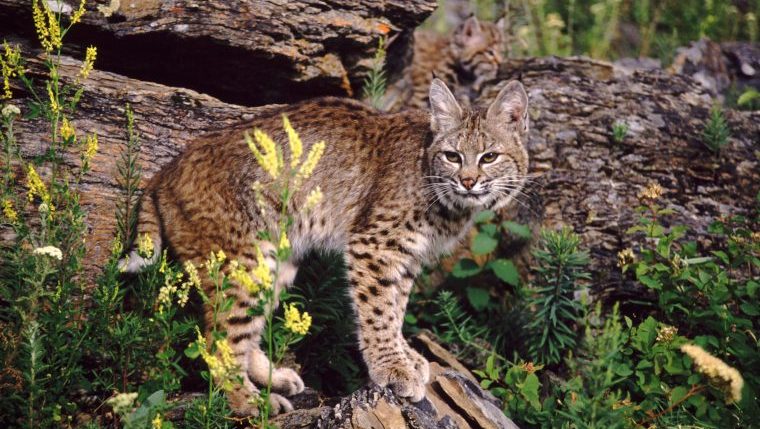
The relationship between dogs and cats is historically not a pleasant one. While today, many dog owners train their pups to be friendly around housecats, dogs have held a reputation as cats’ enemies since the two species began cohabitating with humans. Pet owners are more likely to worry about dogs who hurt cats, not the other way around. Bobcat attacks on dogs are uncommon but dangerous. Dogs may not recognize the danger of what looks to be a large kitty and approach them like they would a house cat. However, bobcats weigh 15-35 pounds, much larger than some breeds like Chihuahuas or Pomeranians. One unfortunate rescue dog came face to face with a bobcat and lived to tell the tale. Now, his owner is warning other dog owners to be on the lookout for bobcat attacks.
Bobcat attacks dog
Little Joe is a small mixed-breed rescue dog who lives in North Texas. Little Joe normally goes out in the backyard with no trouble. But recently, the Chihuahua mix alarmed his owner, who heard him yelping from the garden.
“When I heard him crying, I thought he got caught up in some wire of something, and I went over to get him, rescue him, and it startled me when that big animal flew out…exploded out of the bushes,” dog owner George Dalton told NBCDFW News. “It went at me and over the fence. And my first reaction was ‘Oh my God that was a bobcat.'”‘
Preventing wild animal encounters
The best way to avoid a bobcat attacking your dog is to make the animal feel unwelcome in the first place. “What we would recommend doing is hazing that animal,” said Richter. “Which is basically making loud noises, so you know clap your hands together, yell, wave your arms, get pot lid, bang them together.” If you spot a bobcat or other predator, take your dog indoors and try to scare them off. Do not approach the animal.
Wild animals can pose threats to your dog. If you’re exploring a trail in the wilderness, keep your dog on a leash. Even in your own backyard, use supervision to ensure your dog doesn’t get into a sticky situation. In areas where wildlife is common, consider using deterrents on your property. Outdoor food sources, like dog or cat food or opened trash bins, are free meals to wildlife; be sure not to offer easy dinners to attract them to your property!









